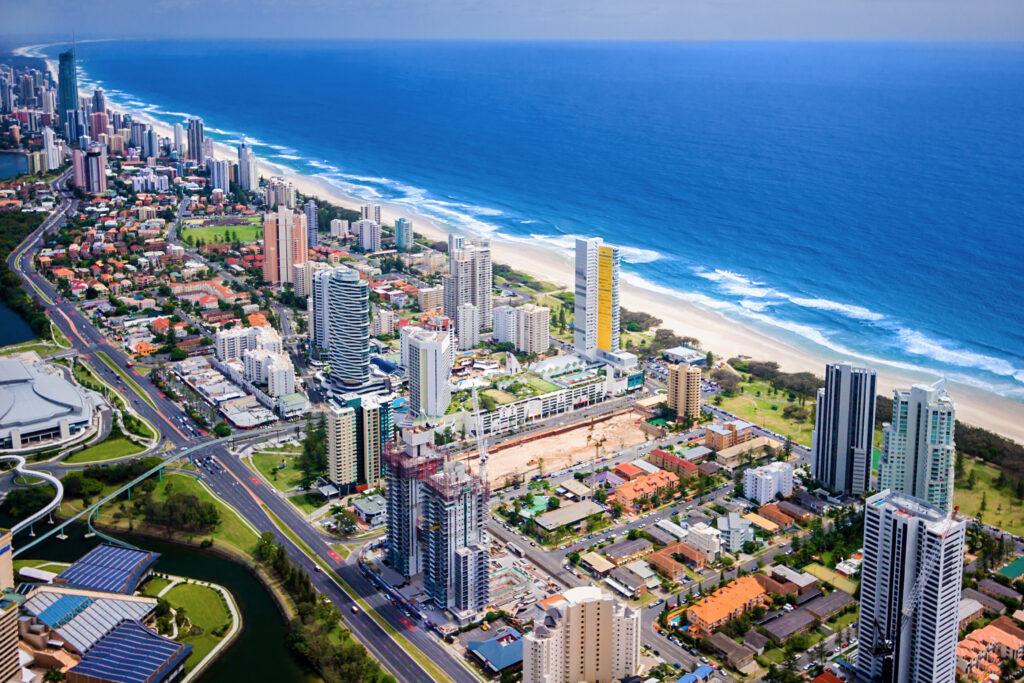Eleven homes are to be relocated to make way for a fast rail project between the Gold Coast and Logan in time for the 2032 Olympic Games and Paralympic Games. Instead of demolishing the resumed homes, the Queensland Government has announced it will move the homes and repurpose them for social housing. A five-bedroom house has already been moved to Sunnybank while a contract has been awarded for the moving of another. The 11 homes to be relocated will deliver an additional 36 bedrooms to Queensland’s social housing supply. They are being moved to state-owned land. The homes have come from various streets in Loganlea, Kuraby, Kingston and Logan Central. A final number of resumptions for the project is yet to be determined, although 21 property owners have already been told their land will be needed. The project will result in 20km of the Gold Coast Beenleigh line between Kuraby and Beenleigh being duplicated and train station upgraded.
Quote of the Week
“The softening in rental growth occurred in spite of an ongoing surge in overseas migration and a continued shortage in rental supply, suggesting an increasing portion of tenants are reaching their affordability ceiling.”
CoreLogic Economist Kaytlin Ezzy
Inland Rail Moves Step Closer
The Federal Government has begun to establish the various entities required to help speed up delivery of the Inland Rail project. It announced this week that it will separate its governance and delivery arrangements from the Australian Rail Track Corporation’s (ARTC’s) day to day operations. A new subsidiary, Inland Rail Pty Ltd, will govern the delivery of the project which is designed to meet Australia’s growing freight requirements. It is anticipated the section between Beveridge in Victoria and Parkes in NSW will be completed by 2027. Work started on the project in Victoria in February 2023, with construction now underway in two of the three states through which the route will run. An independent review into the project was started in October 2022, with its recommendations handed down in April 2023. The review addressed issues that the project was facing significant delays and cost pressures. One of the recommendations was that enhanced governance arrangements and appropriate environmental approval processes be put in place.
Mortgage Refinancing Booms
The number of homeowners refinancing their mortgages is on the rise as banks shun APRA’s 3% lending buffer. APRA recommends that banks add a buffer of 3% to current interest rates when accessing a borrower’s capacity to repay. But some of the big banks are now allowing some owners to refinance without strictly adhering to the 3% buffer. The Commonwealth Bank of Australia, NAB and Westpac are allowing a 1% buffer to refinancers who meet certain criteria. Despite the change in tactic, banks are still being cautious about who they lend to with key considerations including whether borrowers have savings and the ability to repay the loan. Banks are also factoring in the additional costs associated with switching lenders such as break costs from exiting an existing loan, establishment and discharge costs. With the RBA continuing to increase interest rates, the mortgage refinancing market has picked up pace of late with homeowners keen to secure lower repayments where they can.
Unit Rents Surging
Unit rents are increasing faster than house rents, according to CoreLogic’s quarterly rental review. It shows the difference between median house and median unit rents is now only $34 per week, after unit rents rose by 4.4% in the three months to May. During the same period house rents rose by 2%. CoreLogic economist Kaytlin Ezzy says while rents are high across the board, the monthly rate of rental growth eased in June. “The softening in rental growth occurred in spite of an ongoing surge in overseas migration and a continued shortage in rental supply, suggesting an increasing portion of tenants are reaching their affordability ceiling,” Ezzy says. “While rental demand from overseas migrants is likely to remain strong for some time yet, particularly across the largest capitals, we’ve already seen a reduction in domestic rental demand via an increase in the average household size.” Nationally rents are 27.4% higher than at the start of COVID, or about $127 per week more.










